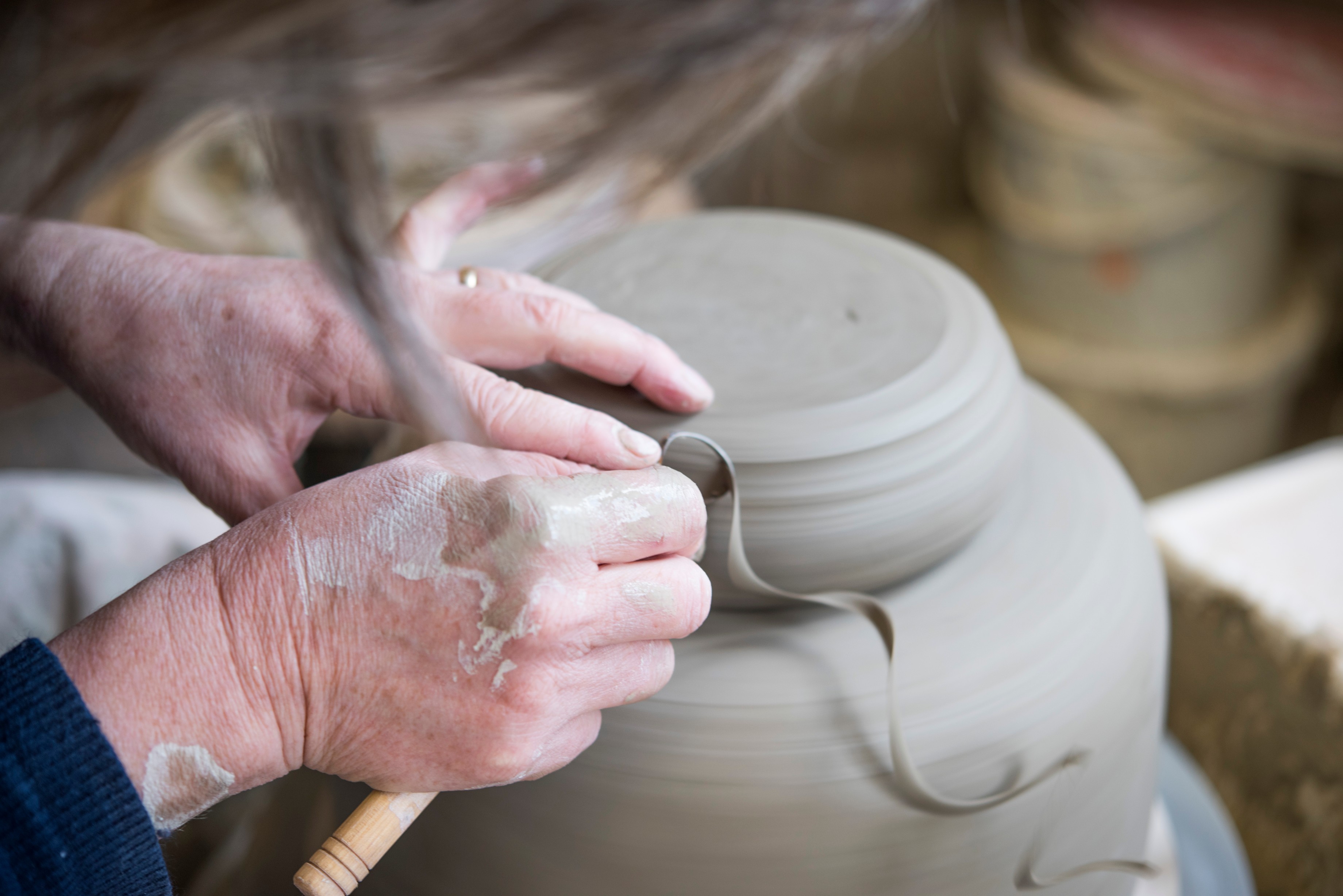Nicola Tassie spends her days covered in clay and thinking about the relationships between form and function, art and objects. But it hasn’t always been that way, just for the past 30 years or so. Before that, she was a painter.
Tassie is a British potter who creates hand-thrown tableware and lamps for well-known U.K. clothes designer Margaret Howell. With more than 80 locations in Europe and Asia, Howell markets, in addition to clothing, exclusive lines of housewares and furniture, including a collection of Tassie’s signature ceramic jugs.
The affiliation means Tassie’s work is sold around the globe, in stores and online.

“I am very luckily one of a very few potters to be part of her ethos,” Tassie says of Howell, who first became known in North America as the designer behind the red corduroy jacket worn by actor Jack Nicholson in the movie The Shining in 1980.
But when she is not making pieces for Howell, Tassie is still at her wheel in her studio in East London. She works every day, but admits she never initially planned to be a ceramicist. She had studied painting at the Central School of Art and Design in London. But her relationship with that medium was never an easy one. As she explains it, she had a “problem with content. The blank canvas was daunting.”
As she struggled, she took a casual hobbyist class in ceramics, where she discovered that, unlike the “infiniteness of a blank canvas,” pottery has limits; ones she would come to love and work within for decades to come.
“In ceramics, you had to make an object,” she explains. And that object had to be round, “as you are limited on what you can make on a wheel. I like that restriction.”
Now, she works only with clay. “I am completely committed to the material,” she says. “It’s sort of beyond enjoyment now. It is me. It’s almost an addiction. I just can’t keep away from doing it. That’s why I do it. That’s how I do it. I find metaphors in it for who I am.”
One of the attractions with ceramics that keeps her intrigued is the form of a simple jug, and what she calls its “singularity.”
“You only need one jug in a tea set or on a table. You don’t have to match it. I also like that it has a handle, that it disrupts the symmetry. A jug has a sense of generosity to it; the handle invites you to pick it up and to use it.”
Exploring that relationship between form and function, and how certain objects, although functional, can also be viewed as works of art has captured her imagination. This approach perhaps explains the appeal of her pieces as display items for the home, but for Tassie, it goes deeper than that. Ceramics play a part in our culture and history. She explores those relationships as she creates what she terms “conceptual pieces,” still-life sets, sculptural pieces and totems of pots, some as big as 2.5 metres high.
And as she explores, she plays with a variety of ceramic techniques, from markings, to glazes, firing temperatures and even positioning within the kiln, each having the ability to bestow a different look on a piece. As she points out, it took Wedgwood up to 500 tests to get the finish for its Jasperware just right.
But it is the notion of a functional piece being viewed as an art object that captures and intrigues her.
“I am very interested in this boundary – between being useful and art,” she says. “I like to work between both of these ideas.”
It’s a concept that is gaining traction, too. As Tassie explains, there was a time when “you would never see ceramics in a fine art gallery. That is changing. Finally, the material is being rediscovered.”
For her, this is just one more part of the evolution of ceramics, which has a rich and long history. “It’s one of the most ancient materials that we have.” And civilizations have been making ceramics for millennia. “It is a mirror of our culture,” she says.
Everyone uses it for sharing a meal, an act she calls “the height of community.” And everyone has dishes for special occasions and everyday use. “Having the finest bone china means you have standing,” yet everyone has “a throw-away mug” that they use every day.
“I quite like the democracy of that,” Tassie says. It could be argued that it, too, has form and function.
 Nicola Tassie’s tableware is sold through Margaret Howell shops in London, Japan, and Paris and at Maud and Mabel in London, which also sells online at www.maudandmabel.com.
Nicola Tassie’s tableware is sold through Margaret Howell shops in London, Japan, and Paris and at Maud and Mabel in London, which also sells online at www.maudandmabel.com.
Her sculptural installations and still life groups are sold through The New Craftsmen in London and online at www.thenewcraftsmen.com








